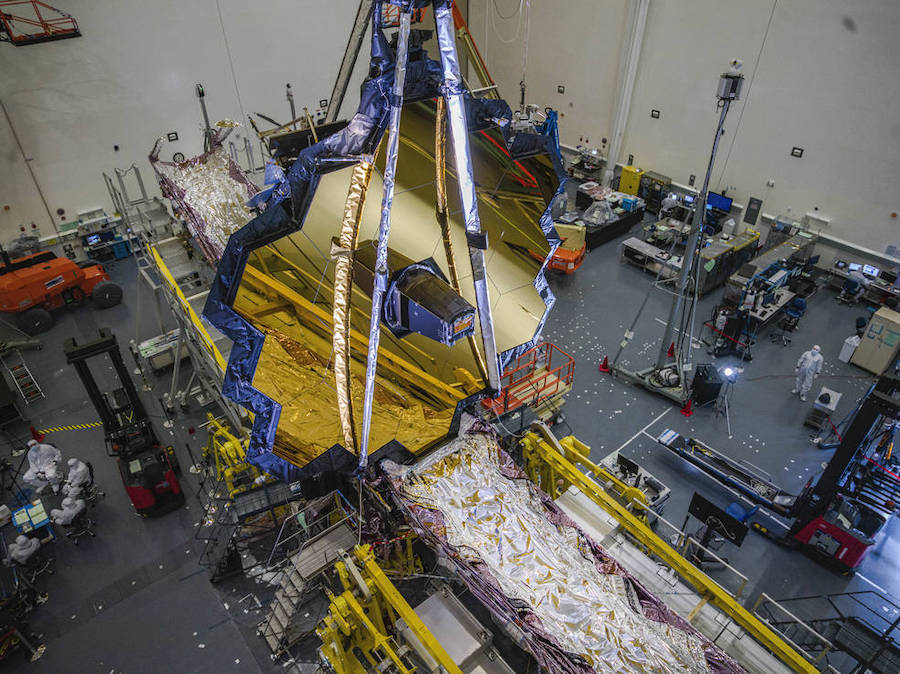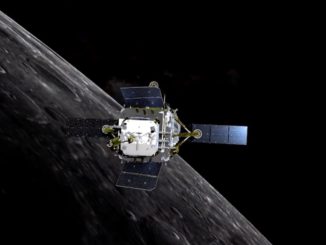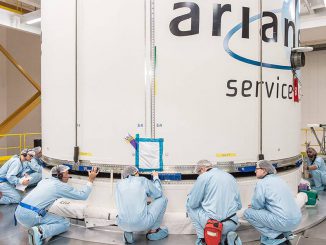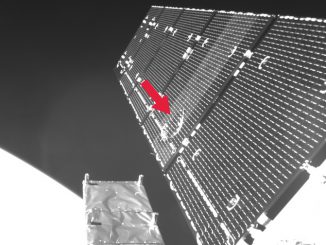
NASA officials said Thursday the launch of the James Webb Space Telescope will be delayed seven months to Oct. 31, 2021, a schedule slip that takes into account work slowdowns caused by the coronavirus pandemic and the amount of testing required on the observatory before its shipment to French Guiana for liftoff on a European Ariane 5 rocket.
“Webb is the world’s most complex space observatory and our top science priority,” said Thomas Zurbuchen, associate administrator for NASA’s science mission directorate. “We’ve worked hard to keep progress moving through the pandemic. The team continues to be focused on reaching milestones and arriving on the technical solutions that will see us through to this new launch date next year.”
The James Webb Space Telescope was previously scheduled for launch March 30, 2021.
The seven-month launch delay will consume some of the program’s funding margin, but NASA officials said they expect to ready the mission for launch under the observatory’s development cost cap of $8.8 billion.
“Based on current projections, the program expects to complete the remaining work within the new schedule without requiring new funds,” said Gregory Robinson, NASA’s Webb program director.
Webb will be the largest space telescope ever launched into space, and it carries four infrared science instruments to peer deep into the universe, giving astronomers new views of the first galaxies after the Big Bang. Webb will also study the atmospheres of planets around other stars, yielding data that could tell scientists which of the worlds might be habitable.
Testing and preparatory work on the observatory at Northrop Grumman in Redondo Beach, California, was progressing slower than anticipated last year, prompting NASA to plan a review of the mission’s schedule in April. But the onset of the coronavirus pandemic has further slowed work at Northrop Grumman this year, and NASA managers held off on the schedule assessment until this month to allow more time to gauge the virus’s impacts on the mission.
NASA engineers and oversight managers based at the Goddard Space Flight Center in Maryland, where the JWST project is managed, left the Northrop Grumman facility in California in March. That effectively stopped work on JWST’s optical telescope and instrument systems, which is NASA’s responsibility.
Northrop Grumman, the prime contractor for the JWST spacecraft and sunshield, was able to continue some work on the mission. But the progress was slower than planned, with the contractor working at about 40 percent efficiency, according to Steve Jurczyk, NASA’s associate administrator.
Northrop Grumman has returned to multiple shifts working on Webb, and NASA engineers are now back on site at Redondo Beach. But teams are following physical distancing guidelines, limiting the number of people who can be in confined spaces at one time. That impacts the rate at which team members can put on their clean room garments and take air showers to enter the high bay with the observatory.
“Activities to complete work will stretch out a little,” Robinson said Thursday.
NASA assumed the restrictions related to the coronavirus would slow work on the observatory by about 20 percent, according to Robinson.
Delays related to the coronavirus pandemic accounted for about three months of the seven-month delay NASA announced Thursday, Jurczyk said.
He said NASA added two more months to the schedule to allow ample time for teams to complete hands-on work on the observatory, based on revised estimates of how long it takes workers to perform complex tasks like unfurling the craft’s tennis- court-sized sunshield, then folding the five-layer thermal barrier and stowing it again for launch.
NASA built in two additional months as a backstop to allow time for any further delays, resulting in the mission’s seven-month launch slip.
Zurbuchen said ESA, which is paying for Webb’s launch, has ensured an Ariane 5 rocket will be available to launch the observatory in October 2021. Arianespace, the Ariane 5’s commercial operator, plans to retire the heavy-lift rocket in the next couple of years in favor of the new Ariane 6 launch vehicle.
NASA and Northrop Grumman plan to ship the observatory from Southern California to the Ariane 5 launch base in South America next August.
Before then, engineers plan several major tests on the fully-assembled observatory to ensure it can withstand the rigors of launch.
Robinson said Thursday that teams recently completed a comprehensive systems test on Webb, and a test of the mission’s ground infrastructure was due to finish this week.
Beginning as soon as next month, engineers will begin a series of environmental tests on Webb. The observatory will first undergo an acoustic test to simulate the sound energy it will see during launch, then ground crews will shake Webb to mimic the vibrations it will encounter during the climb into space on the Ariane 5 rocket.
Individual elements of the spacecraft and the telescope have passed similar acoustic and environment tests before, but this is the first time the entire observatory will undergo the sound and shake testing.
Once the environmental tests are complete, engineers will deploy the observatory into its operational configuration to check that actuators and mechanisms are still in good shape. Ground crews will then fold up the observatory to fit inside the Ariane 5’s payload fairing, and Webb will be in space the next time it unfurls its telescope wings, sunshield and other appendages.
Email the author.
Follow Stephen Clark on Twitter: @StephenClark1.



